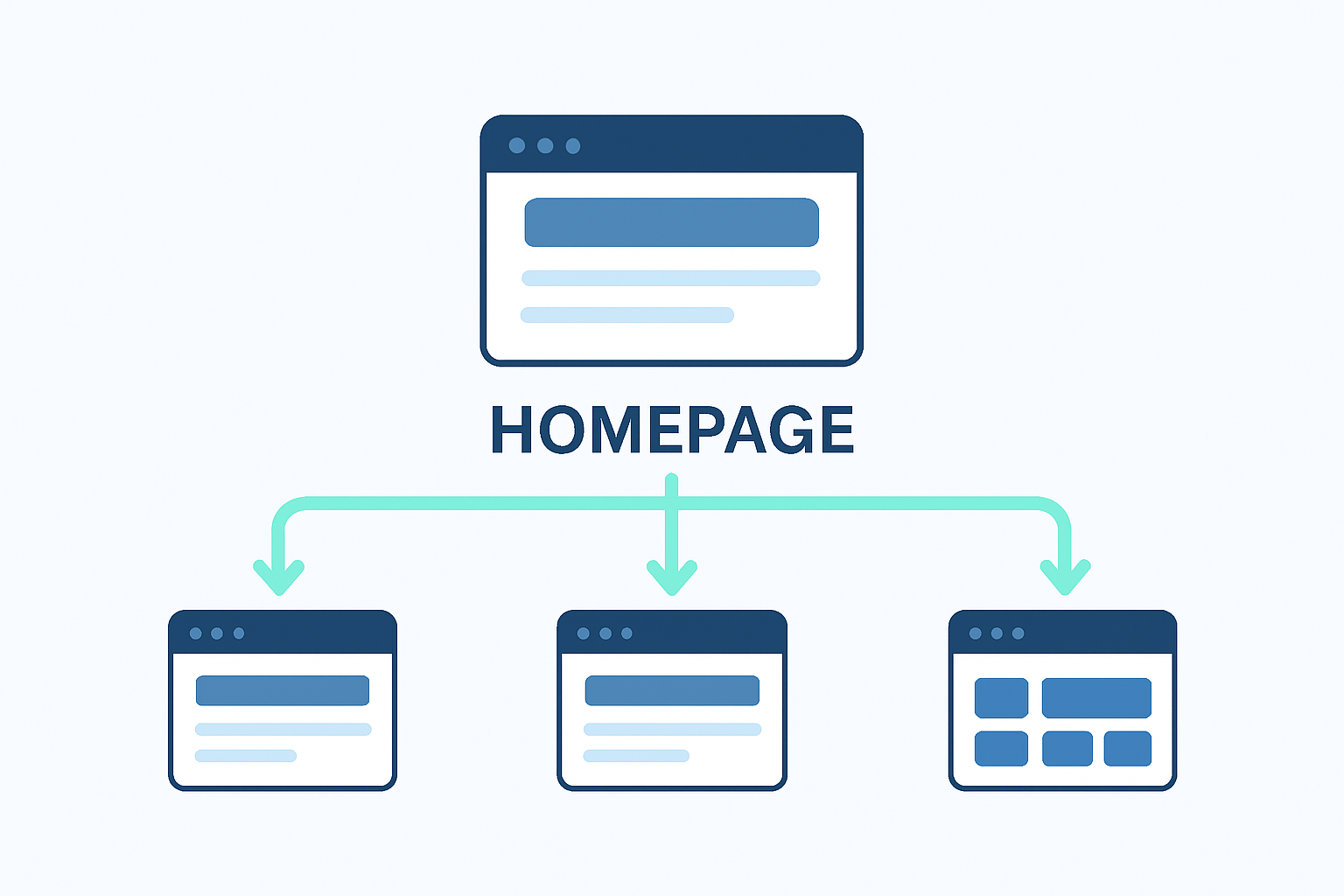- +91 9409789822
- webdigitalwaves@gmail.com
- Vadodara, Gujarat, India

Introduction
People trying to improve their website for marketing rarely neglect the keywords, backlinks, and content marketing elements. But very few focus on the impact internal linking for internal pages can make while trying to improve website rankings. Internal links assist Google in site mapping, crawl optimization, and user navigation to related pages. Simply stated, these internal links function as bridges between different sections to ensure that both the visitors and the algo find the relevant content easily.
People trying to improve site rankings and engagement cannot ignore the importance of master internal linking. This paper is aimed at providing practical strategies for internal linking in your website SEO plan.
Focus
Underusing and misusing internal linking is the biggest problem for many. Some people do not have a precise internal linking strategy while others do not even bother with them at all. What do these people have in common?
Search engines cannot figure out which pages are critical.
Your website has a high bounce rate because the visitors cannot find their way.
There are huge gaps in the ability of content to pass on link equity.Having no strong internal linking strategy is a waste of good content, as your site may never reach its full SEO potential.
Research
Ahrefs notes that 66% of websites have no internal links directed to their most important pages, which contributes to their poor search performance.
John Mueller of Google has also pointed out that internal links are also crucial for ranking websites.
“Internal links are really important for SEO. With internal links, you can guide Google and visitors to your most important pages.”
In a Moz study, having a good internal linking structure can increase website crawling by 25-40%, which will lead to gaining more organic traffic.
Key Focus Areas
Internal links are not merely for navigation. They indicate content relevance and structure. They also help to transfer ‘link juice’ from high and authoritative pages to newer or deeper pages.
Navigational Links: These links are found in menus, sidebars, or footers.
Contextual Links: These links are within your content, linking to a page that is related to what you are writing about.
Breadcrumbs: These links indicate the path taken. Example: Home > Blog > SEO Tips
Call-to-Action Links: These links push users to important offers, sign-ups, or services.
All anchor text needs to have context and be relevant to the topic. For example:
Wrong: “Click here”
Right: “Learn more about on page SEO tactics”
Pages that sit deep down your site’s structure and are more than three clicks away are likely to be skipped over by Google. Using internal linking helps to bring those pages closer to the homepage making them easier to rank.
Avoid jamming a page with many hyperlinks. Instead focus on user intent by linking only when it adds a crucial value.
Case Studies
HubSpot Blog: HubSpot employs pictorial linking to several articles on the site which enhances readers’ journeys. This increases the time users spend on the site and tells Google the content is rich.
Wikipedia: Has almost unrivaled internal linking. Most pages on the site are connected so that users can access them using a single click. This explains why so many of their pages rank highly on Google.
E-commerce Case: An online clothing retailer links the page with “Men’s Shoes” to the sub pages of “Running Shoes” and “Formal Shoes.” This increases the SEO authority by encouraging users to navigate through multiple hoisted categories.
Step-by-Step Guide to Linking Internally on a Website for SEO Purposes
Results
When executed correctly, internal linking can:
Future, anticipating, and understanding Google’s changing algorithms, internal linking will still be and will maintain a heavy focus in the future. Context and semantic relationships will still be important. Future best practices will probably include:
Conclusion
Being able to do internal linking on the website SEO is a skill that can easily make or break a content strategy. Internal links give and distribute user access and guidance, and also give and distribute authority to the pages of the website, ensuring higher rank for the important pages.
To start, one needs to go organic traffic growth. For effective organic traffic growth carry out a thorough link audit, construct clusters centered around principal, and anchor text needs to be clearly structured. This will not only improve a user’s website experience but also provide better service to the visitors as Google will be pleased with the strategy.